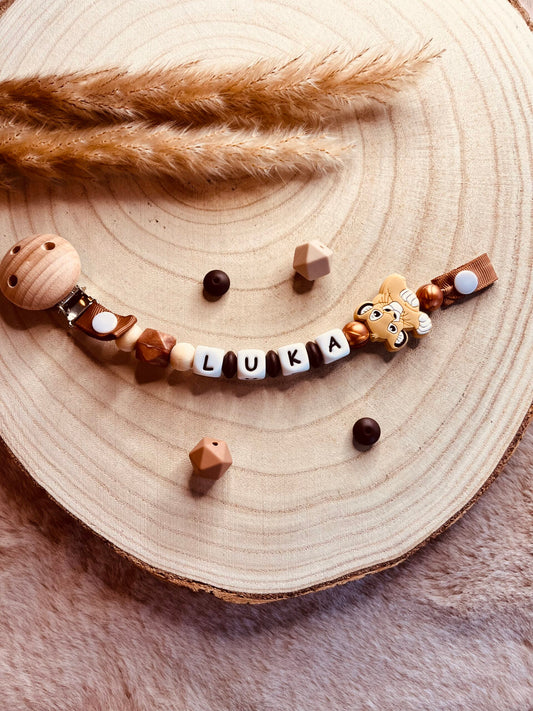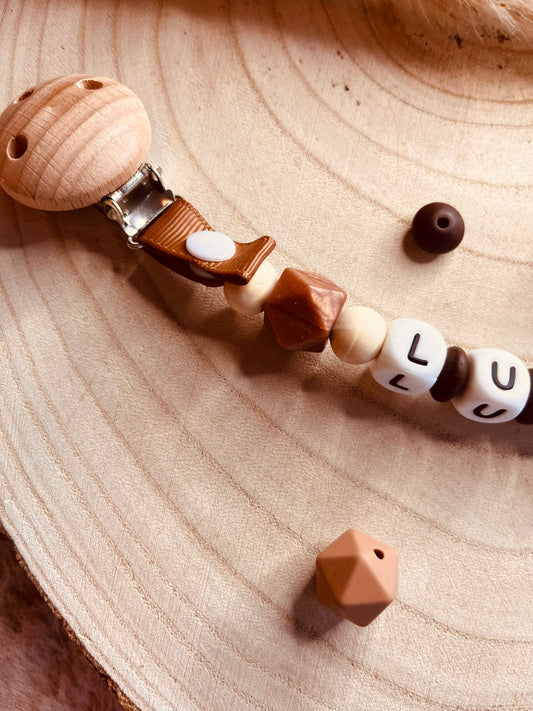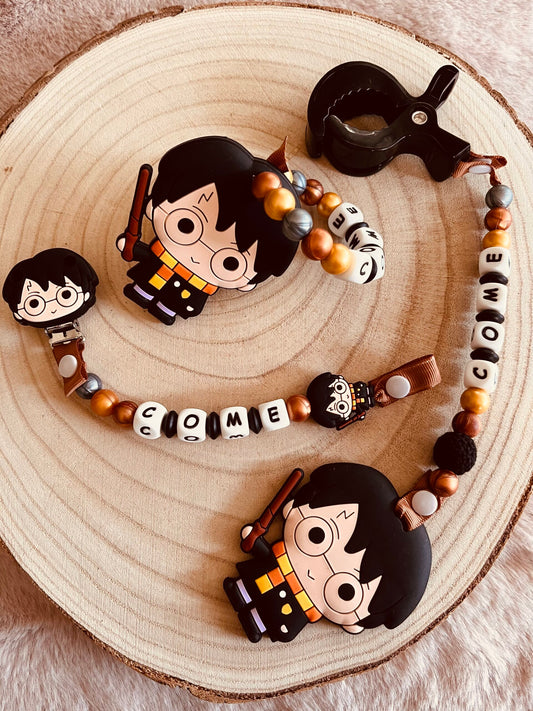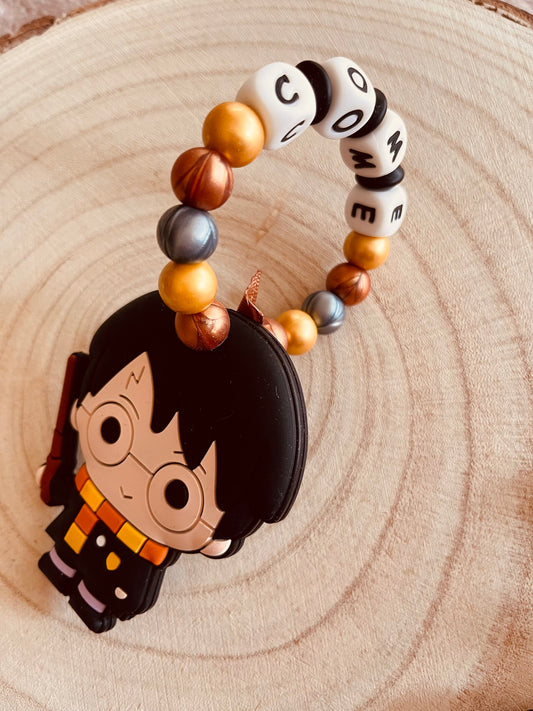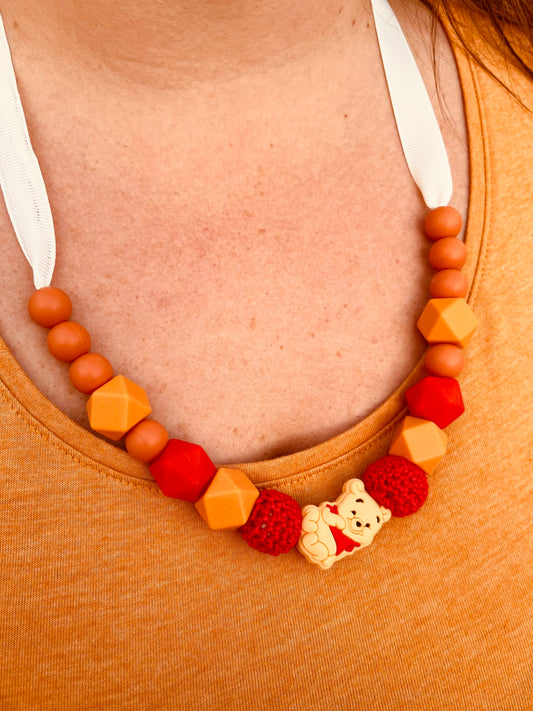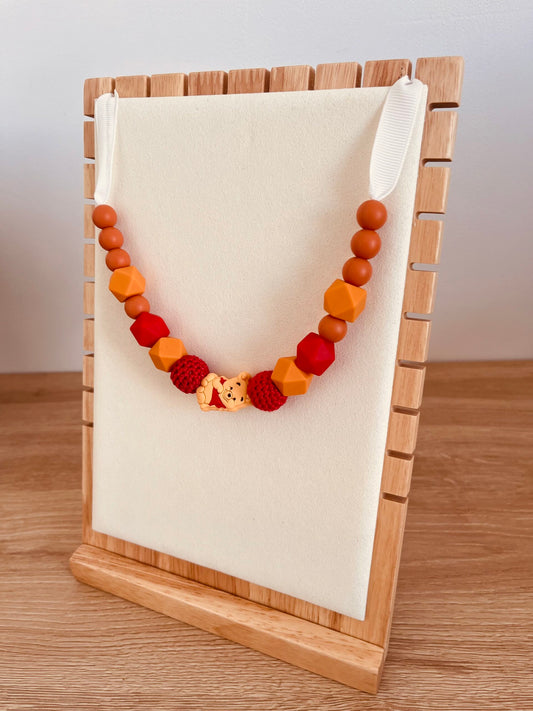Dentition ring: full baby guide
Welcome to the world of teething rings ! If you are a parent, you know how difficult the period of growing teeth can be difficult for your little one. Crying, discomfort, and irritability are all signs that your baby is going through a difficult phase. Have you ever felt helpless in the face of their discomfort?
You may be wondering how to relieve their pain and help them get through this stage more peacefully. teething rings are often the solution we think of. But do you really know how to choose the right model and get all the benefits from it?
In this article, we'll take an in-depth look at what a teething ring is, how it works, and why it's essential for your baby's well-being. You'll also discover the different types available, their benefits, and practical tips for making the best choice. Ready to bring comfort to your little one? Let's go!

What is a teething ring?
A teething ring is a toy specially designed to help babies during their development period. growing teethThis phase can be painful and uncomfortable for them. That's where the ring comes in!
These rings are generally made of safe and durable materials. They are often made of silicone or rubber. Their texture is designed to soothe irritated gums.
But what is it really for? Here are some key points:
- Appeasement: Relieves gum pain.
- Stimulation: Encourages baby to bite and chew.
- Exploration: Allows baby to discover different textures.
- Security : Must be made without BPA, toxins, or small ingestible parts.
There are several types of teething rings. Some are filled with water and can be cooled for a positive effect on the gums. Others are simpler, with fun shapes to attract the baby's attention.
It's important to choose a ring that's appropriate for your baby's age. Younger children with less dexterity will prefer lightweight models that are easy to grasp. Older children will need something sturdier, as they tend to bite harder.
In short, the teething ring is a valuable tool. It is not just a toy, but a real support for growing babies.Have you ever seen how your little one reacts to a ring? It's fascinating!
Benefits and advantages for babies
THE teething rings are much more than just a toy. They play a crucial role during the period of teeth of your baby. Understanding their benefits can really help you make the right choice.
1. Pain relief
When teeth begin to erupt, it can cause pain and discomfort. A teething ring can help in several ways:
- Gum massage : The texture of the ring provides soothing relief.
- Pressure : Pressure on the gums can reduce discomfort.
- Bite reflex : Biting helps the baby feel better.
2. Sensory stimulation
Teething rings often come in a variety of textures and bright colors. This stimulates your baby's senses:
- To touch : Different textures encourage tactile exploration.
- View : Colors attract attention and encourage curiosity.
- Hearing : Some models make sounds, which may intrigue your little one.
3. Development of coordination
Rolling or grasping a teething ring helps your baby develop their hand-eye coordination. By playing, he improves his fine motor skills. Every movement counts in his development!
4. Strengthening the gums
Regularly using a teething ring can strengthen gums. Why is this important? Good oral hygiene starts at an early age, and a ring can prepare gums for teeth.
5. Moment of relaxation
Finally, a teething ring offers your baby a way to calm while playing. This can be especially helpful when they are tired or distressed. Creating a moment of comfort around this object can strengthen the bond between you and your baby.
In short, teething rings don't just relieve pain. They help with development your child's overall health. Remember to choose a safe, age-appropriate model to maximize the benefits.
Available materials and designs
When it comes to choosing a teething ring, the choice of materials and designs is essential. Why? Because it not only influences your baby's safety, but also their comfort and enjoyment of use.
1. Common materials
Generally, materials used for teething rings include:
- Silicone teething ring : Soft and flexible, silicone is very popular. It is easy to clean and BPA-free.
- Wooden teething ring : Natural and durable, wood is perfect for babies who love to chew. Make sure it is well treated and not treated with chemicals.
- Rubber : Often used for its flexibility, it can also soothe gums. Choose natural rubber to avoid toxins.
Choose a model that you think is suitable for your baby, keeping in mind that it should also be on that pleasant to use.
2. Designs and Features
Teething ring designs vary widely. Here are some types that might interest you:
- Classic : round and simple, perfect for easy handling.
- Texture : with different surfaces to massage the gums. This allows for sensory stimulation that can be very pleasant for the baby.
- Multifunctional : Some rings incorporate chewable elements, rattles, or even lights. This can be a way to attract your child's attention.
Ultimately, the choice of materials and design depends on your preferences and your baby's needs. Take the time to compare the options. Think about what will be the most soothing for him!
Instructions for use and safety precautions
Use a teething ring may seem simple, but there are a few advice to keep in mind to ensure your baby's safety while maximizing its effectiveness. Yes, it's essential!
1. Choose the right ring
The first step is to choose a good model.Here are some criteria to consider:
- Safe materials: Choose rings made of silicone, natural wood, or BPA-free rubber.
- Suitable size: Make sure it's big enough to not be swallowed, but not too heavy for little hands.
- Ease of cleaning: Choose models that are easy to wash in the machine or in water.
2. Time of use
It is recommended to limit the time you use the ring. Why? To prevent your baby from developing a dependence excessive. Here are some points to follow:
- Do not leave the ring within reach of your child when not in use.
- Alternate with other activities to keep baby interested.
3. Regular checks
Remember to check the ring before each use. A quick check can prevent big problems. Here's what to do:
- Inspect the ring for cracks or tears.
- Check that there are no loose parts.
4. Don't forget storage
When the ring is not in use, store it in a clean, dry place. Avoid throwing it anywhere to prevent contaminations.
5. Consult a pediatrician
Finally, don't hesitate to talk to your pediatrician. Every child is different. They will be able to advise you based on your baby's specific needs. This may seem common, but it's always best to check!
By following these simple tips, you will ensure your baby has a pleasant experience. dentition both pleasant and secure. Safety first, right?
Where to find the best teething ring?
When you are looking for the best teething ring For your baby, there are several options to consider. Where you buy it can make a big difference, both in quality and price.
Physical stores
Physical stores can provide a convenient shopping experience.Here are some options to explore:
- Pharmacies: They often have rows dedicated to baby products, including teething rings.
- Specialty stores: Stores that focus on baby items may have a varied selection.
- Large areas: Larger stores like Carrefour and Leclerc also offer baby sections. Check the available brands.
Online stores
Shopping online also has its advantages. You can read reviews and easily compare prices. You can find all our teething rings as well as personalized baby boxes including teething rings.
Selection criteria
To choose the best teething ring, take into account:
- Materials: Make sure the ring is made of safe, non-toxic materials.
- Review: Read reviews from other parents to find out what really works.
- Ease of cleaning: Choose easy-to-clean models for optimal hygiene.
In short, whether you choose a physical store or online, the important thing is to carefully consider the available options. Take the time to compare and read reviews to ensure you're making the best choice for your baby.


